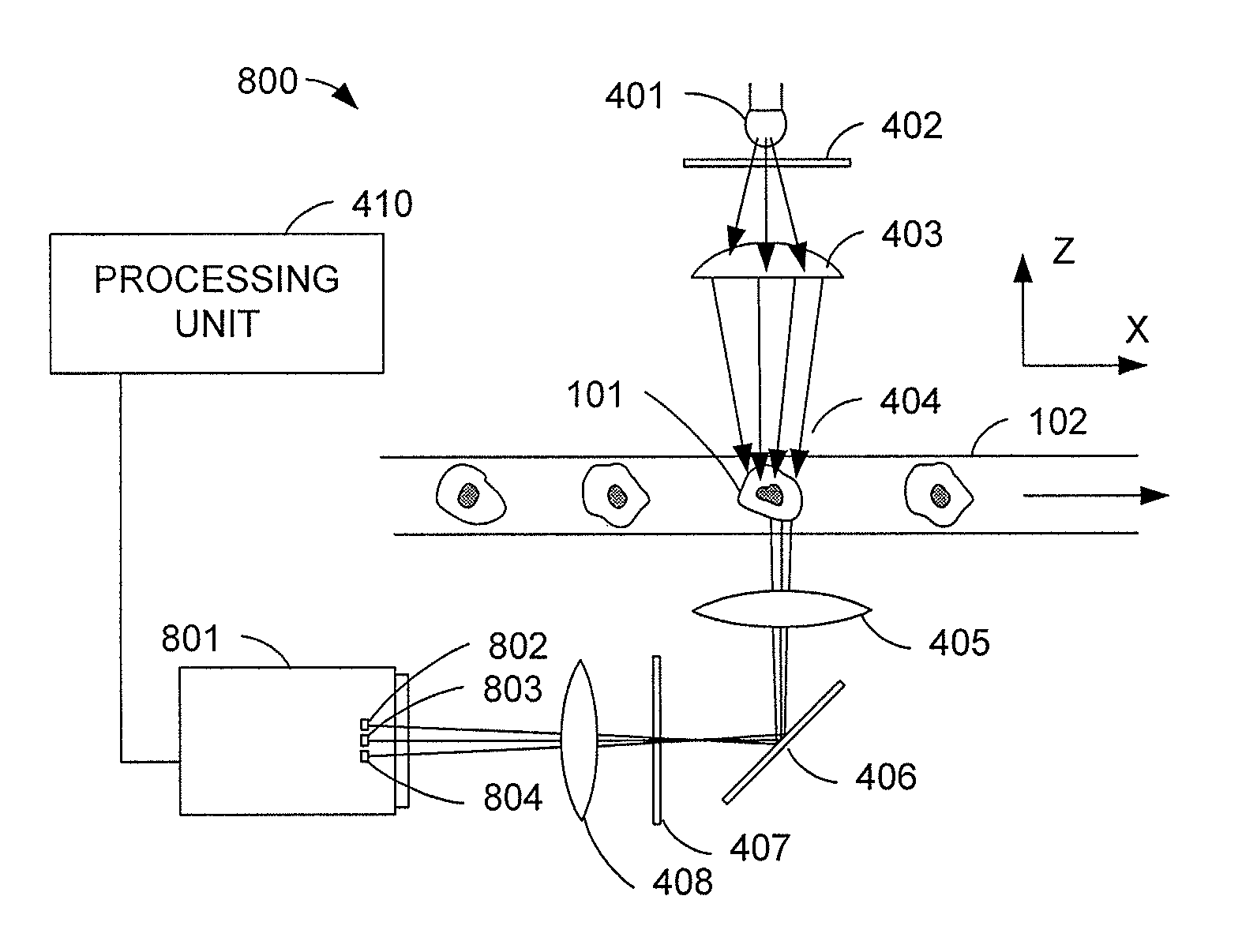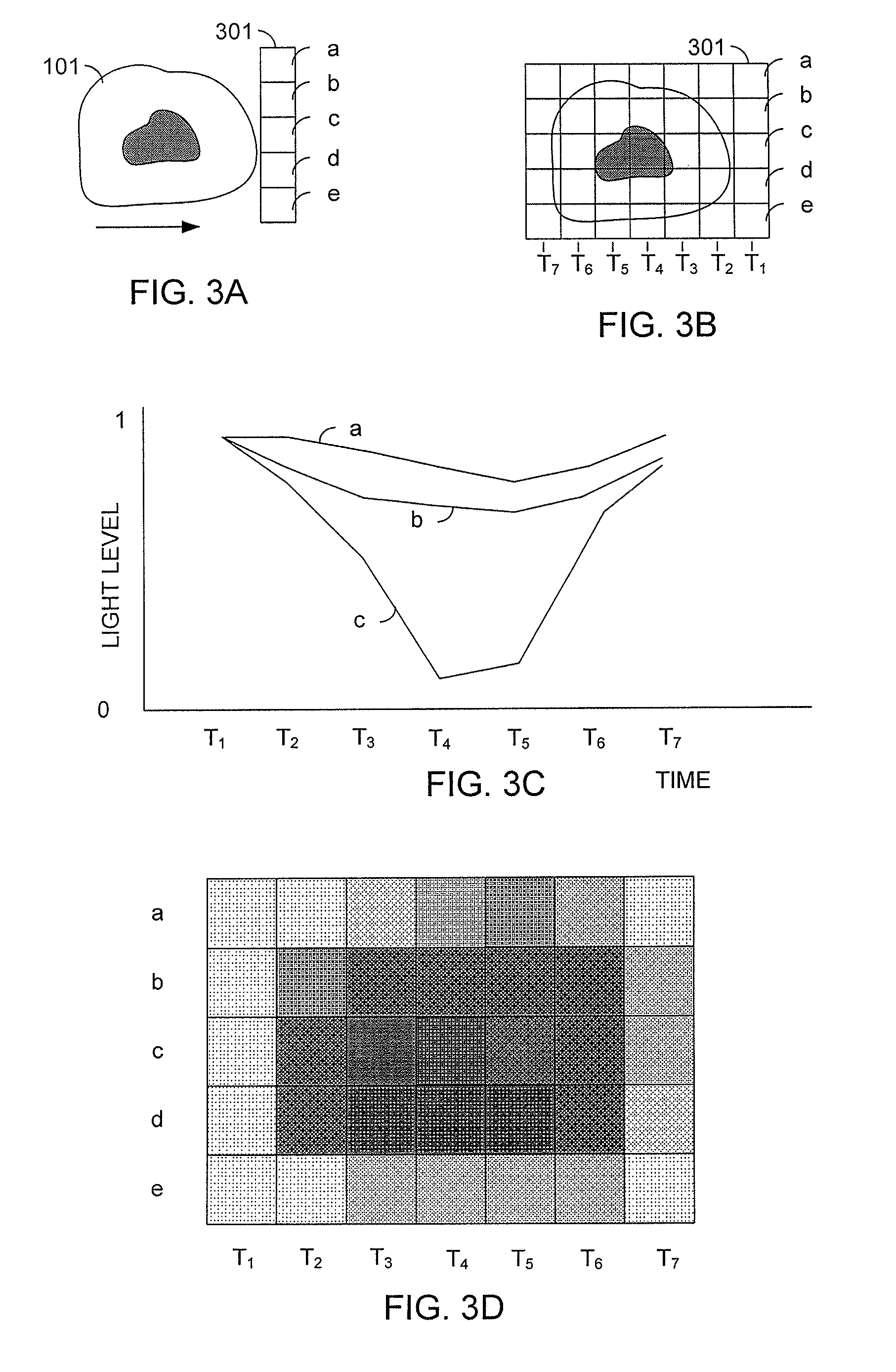Serial-line-scan-encoded multi-color fluorescence microscopy and imaging flow cytometry
a fluorescence microscopy and multi-color technology, applied in the field of biological cell count and characterization, to achieve the effect of improving signal-to-noise characteristics
- Summary
- Abstract
- Description
- Claims
- Application Information
AI Technical Summary
Benefits of technology
Problems solved by technology
Method used
Image
Examples
Embodiment Construction
[0023]FIG. 2 shows a simplified conceptual diagram of a high-speed, high-resolution line scan image cytometry system 200 in accordance with an embodiment. The system of FIG. 2 is a flow cytometry system, although one of skill in the art will recognize that embodiments of the invention may be utilized in other kinds of cytometry as well.
[0024]Cells 101 are entrained in fluid to progress through tube 102 in single file. The system may be used to characterize cells of many different kinds, but in a typical application, cells 101 may be, for example, about 10 to 20 micrometers across, and may progress through tube 102 at a speed of, for example, 10 millimeters per second. A light source 201 provides field of light 203 onto tube 102. Light source 201 may be a laser, a light-emitting diode, an incandescent light source, a fluorescent light source or another kind of light source. Light source 201 may produce substantially monochromatic light, broad spectrum light, or light containing two o...
PUM
 Login to View More
Login to View More Abstract
Description
Claims
Application Information
 Login to View More
Login to View More - R&D
- Intellectual Property
- Life Sciences
- Materials
- Tech Scout
- Unparalleled Data Quality
- Higher Quality Content
- 60% Fewer Hallucinations
Browse by: Latest US Patents, China's latest patents, Technical Efficacy Thesaurus, Application Domain, Technology Topic, Popular Technical Reports.
© 2025 PatSnap. All rights reserved.Legal|Privacy policy|Modern Slavery Act Transparency Statement|Sitemap|About US| Contact US: help@patsnap.com



